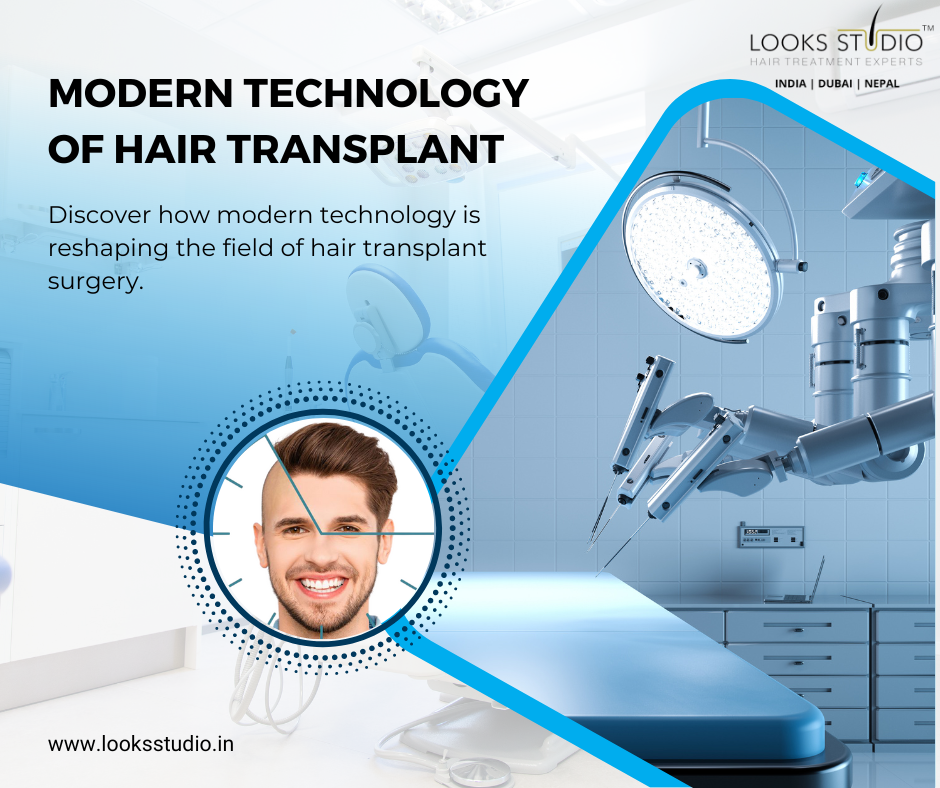Hair loss is a common concern that affects millions of people worldwide, often impacting self-confidence and self-esteem. Over the years, hair transplant surgery has provided a solution for individuals seeking to restore their hair and regain their confidence. However, the field of hair transplant has undergone a significant transformation with the integration of modern technology. This article explores how cutting-edge technology is revolutionizing hair transplant procedures, addressing common questions such as “What is the modern technology of hair transplant?” and “Is hair transplant technology improving?”
The Evolution of Hair Transplant Technology
Historically, hair transplant procedures were limited to techniques like Follicular Unit Transplantation (FUT) and Follicular Unit Extraction (FUE). These methods, while effective, had their limitations, including visible scarring and longer recovery times. Modern technology has paved the way for more advanced techniques that deliver superior results and a better patient experience.
Robotic Hair Transplantation has emerged as one of the most remarkable advancements in the field. Robotic systems, such as the ARTAS system, use sophisticated algorithms and artificial intelligence to identify and extract hair follicles with unparalleled precision. This technology minimizes human error, ensures consistent graft quality, and reduces scarring. As a result, patients can achieve more natural-looking outcomes with faster recovery times.
Automated Follicular Unit Extraction (FUE)
Automated FUE devices represent another breakthrough in hair transplant technology. These devices assist surgeons in extracting hair follicles using mechanized tools, reducing the reliance on manual labour. This automation improves efficiency, shortens procedure times, and maintains uniform graft quality. Surgeons can now perform larger transplant sessions in a single sitting, achieving denser coverage for patients.

Platelet-rich plasma (PRP) Therapy
While not a standalone transplant technique, Platelet-Rich Plasma (PRP) therapy has become an essential complement to modern hair transplant procedures. PRP involves drawing a patient’s blood, processing it to concentrate platelets, and injecting the platelet-rich solution into the scalp. The growth factors in PRP promote healing, enhance graft survival rates, and stimulate the growth of both transplanted and existing hair follicles.
Advanced Imaging and Planning
Modern technology has also transformed the pre-operative phase of hair transplant procedures. Surgeons now use 3D imaging and simulation tools to meticulously plan the transplant. These tools allow for precise graft placement, ensuring a natural hairline and optimal coverage. Patients can preview the potential outcomes, giving them a clearer understanding of the final results.
Low-Level Laser Therapy (LLLT)
Low-Level Laser Therapy (LLLT) is a non-invasive technique that employs low-level lasers to stimulate hair follicles. LLLT promotes blood circulation and encourages hair growth, making it an ideal option for both pre and post-transplant care. By improving the overall health of existing hair and supporting transplanted follicles, LLLT enhances the final aesthetic outcome.
Is Hair Transplant Technology Improving?
The resounding answer is yes. Hair transplant technology is continually improving, thanks to ongoing research and innovation. Surgeons and researchers are consistently seeking new ways to refine existing techniques and develop novel approaches. The integration of technology ensures that each advancement builds upon the previous one, providing patients with ever-improving results.
The Most Modern Hair Transplant Technique
The most modern hair transplant technique combines the best aspects of robotic assistance, automated FUE, PRP therapy, and advanced imaging. This technique ensures minimal scarring, precise graft placement, and optimal graft survival rates. By addressing multiple factors, this approach sets a new standard for natural-looking and long-lasting results.
Latest Advances in Hair Transplant Surgery
Beyond the specific technologies mentioned earlier, ongoing research has led to various other advancements. These include improved graft storage solutions, better wound closure techniques, and enhanced post-operative care protocols. Each advancement contributes to reducing downtime, optimizing results, and making hair transplant surgery more accessible to a wider range of individuals.
The New Technology for Hair Transplant in 2023
As of 2023, the latest technology in hair transplant continues to focus on refining existing techniques. This may involve further enhancing the capabilities of robotic systems, improving the precision of graft extraction, and exploring new ways to stimulate graft survival and hair growth. Patients can anticipate even more natural results and reduced recovery times.
Conclusion
The evolution of hair transplant technology is a testament to human ingenuity and the desire to improve the lives of individuals experiencing hair loss. Modern technology has transformed hair transplant procedures, allowing for more precise graft extraction, better planning, and enhanced patient experiences. As technology continues to evolve, the field of hair transplant is poised to offer even more remarkable results, helping people reclaim their confidence and self-esteem.
